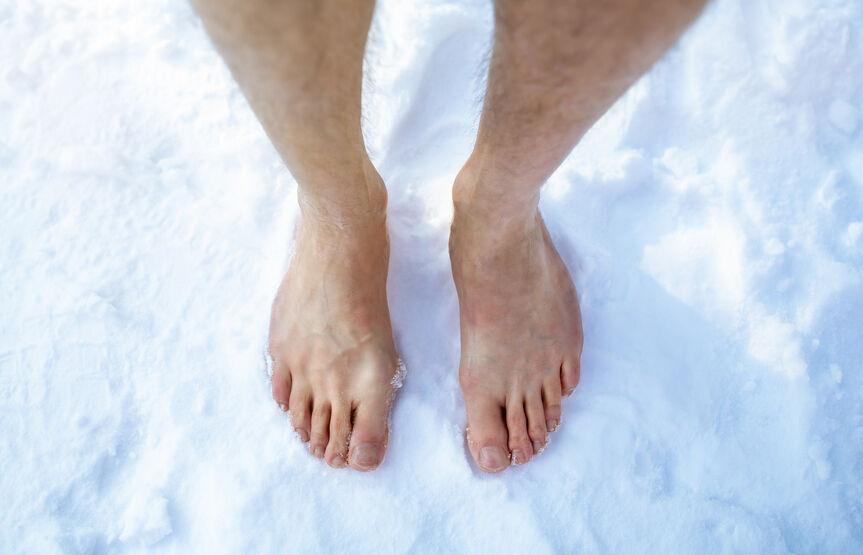- posted: Oct. 18, 2022
In October, we at Feet First Foot Care Specialists recognize Raynaud’s Awareness Month. Raynaud’s disease is a widespread disease but is not well known. Raynaud's (ray-NOSE) disease causes some areas of your body — such as your fingers and toes — to feel numb and cold in response to cold temperatures or stress. In Raynaud's disease, smaller arteries that supply blood to your skin become narrow, limiting blood flow to affected areas. Treatment of Raynaud's disease depends on its severity and whether you have other health conditions. For most people, Raynaud's disease isn't disabling, but it can affect your quality of life. In this article, we will be sharing everything you need to know about Raynaud’s Disease. 
Diagnosis
To tell the difference between primary and secondary Raynaud's, your doctor might do a test called nailfold capillaroscopy. During the test, the doctor looks at the skin at the base of your fingernail under a microscope or magnifier to look for deformities or swelling of the tiny blood vessels.
Signs and Symptoms
Raynaud's syndrome causes spasms in small blood vessels in your fingers and toes. This limits blood flow and leads to symptoms like skin color changes, cold skin, and a pins and needles sensation. Common triggers of Raynaud's attacks include cold weather and stress. The most common signs and symptoms of Raynaud’s Disease are:
- Cold fingers or toes
- Color changes in your skin in response to cold or stress
- Numb, prickly feeling or stinging pain upon warming or stress relief
Pain
Raynaud's phenomenon is a condition where blood flow to your fingers, toes, ears, or nose is restricted or interrupted. Also known as Raynaud's syndrome, it occurs when the blood vessels in your hands or feet constrict. Episodes of constriction are called vasospasm. Although Raynaud's most commonly affects your fingers and toes, it can also affect other areas of your body, such as your nose, lips, and ears. After you warm up, the return of normal blood flow to the area can take 15 minutes.
Age
Raynaud’s Disease is usually diagnosed in people between the ages of 35 and 40. Women are more likely than men to have Raynaud's disease, also known as Raynaud's or Raynaud's phenomenon or syndrome. It appears to be more common in people who live in colder climates.
When To See a Podiatrist
To schedule an appointment at our Cromwell, Connecticut office call (860)-632-5499 or visit our website for more information.
Questions or Comments?
We encourage you to contact us whenever you have an interest or concern about our services.
Call Today (860) 632-5499
162 West St Ste K Cromwell, CT 06416






